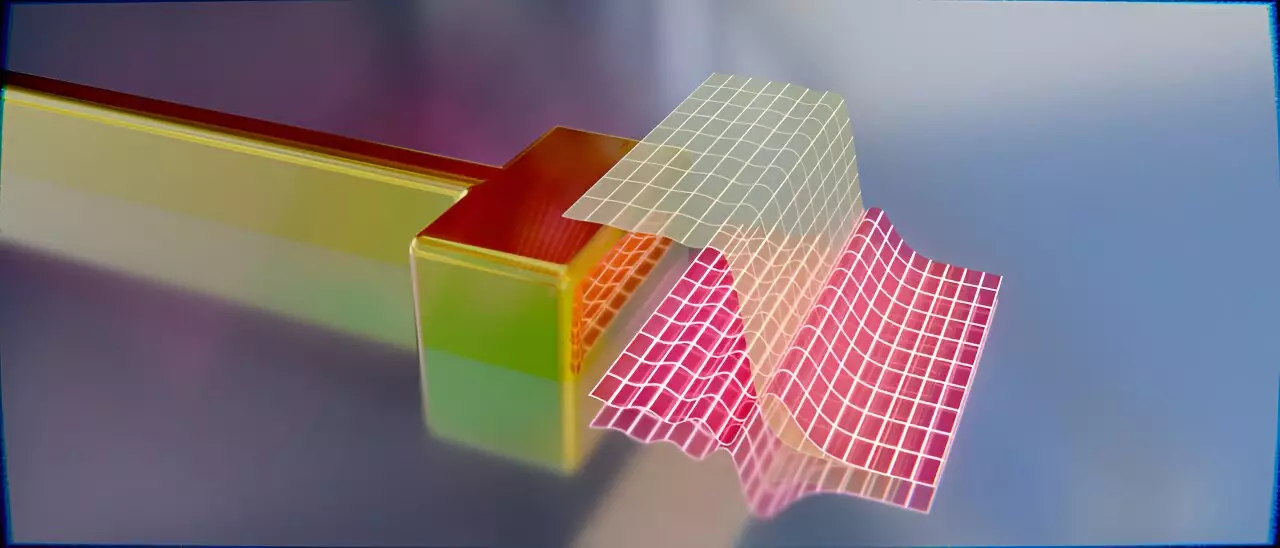As technology advances, the pressing issue of speed limitations in contemporary computing has become increasingly apparent. With semiconductor components generally operating within a limited frequency spectrum—typically a few gigahertz—computers today are reaching their physical limits in processing capacity. The standard operational framework relies heavily on distributing computational tasks across multiple chips, as enhancing the speed of individual chips has proved difficult. This predicament highlights a fundamental challenge in the industry: speeding up processing without a fundamental shift in technological approaches.
The exploration of alternative mediums for information transfer is one potential solution to bridge this gap in computing speed. Theoretical and experimental studies suggest that utilizing light (or photons) in place of conventional electrical signals (electrons) could potentially yield computers that are up to 1,000 times faster than current architectures. Plasmonic resonators, often described as “antennas for light,” represent a promising frontier in this endeavor. These minute, nanometer-sized metallic structures facilitate interactions between light and electrons, presenting a mechanism by which we might achieve the necessary leaps in speed required for the next generation of computing systems.
However, a significant barrier persists: plasmonic resonators, unlike conventional transistors, struggle with effective modulation. The ability to manipulate these resonators is crucial for developing high-speed optical switches, which could bring about the era of light-based computing that enthusiasts and researchers alike have long anticipated.
Recent collaborations between research teams from the Julius-Maximilians-Universität (JMU) Wurzburg and Southern Denmark University (SDU) have illuminated pathways to overcoming modulation challenges. The findings, published in the journal Science Advances, detail a fundamental breakthrough in electrically controlled modulation of light antennas. Rather than modifying the entire resonator structure, the JMU team centered their efforts on altering the surface properties of a single nanorod resonator composed of gold. This strategy, while conceptually straightforward, demanded sophisticated techniques in nanofabrication involving helium ion beams and gold nanocrystals—showcasing a remarkable synergy of creativity and engineering precision.
This innovative approach has not only facilitated a novel method of modulation but has also opened pathways for creating faster, more efficient plasmonic devices. Remarkably, the method harnesses electrical contact at the nanoscale to affect the optical properties, analogous to the protective principles of a Faraday cage, where the distribution of electrons can shield the system’s internals.
Central to the observed success of these plasmonic resonators is an intriguing shift from classical physics to quantum mechanics. In traditional models, electron behavior at the surface of nano-sized resonators adheres to predictable patterns, akin to waves crashing against a solid shore. Recent experiments challenge this straightforward view by illustrating that electron distributions can exhibit a more nuanced, graduated transition across the metal-air boundary, reminiscent of the gentle gradient of a beach meeting the ocean. This significant finding necessitates a more robust theoretical framework.
The research team at SDU has addressed this by developing a semi-classical model—a blend of classical and quantum mechanical principles—that not only explains the observed phenomena but also allows for tailored antenna design. This new model enables researchers to isolate specific quantum effects, theoretically guiding the development of future plasmonic devices while enhancing our understanding of electrodynamics on a microscopic scale.
The implications of these research breakthroughs extend far beyond computer chip enhancements. The potential applications for smaller, more efficient optical modulators are vast and varied. Researchers envision these technologies could revolutionize telecommunications, data processing, and even energy conversion processes. Particularly noteworthy is the potential exploration of the influence of surface electrons in catalytic processes, which could yield breakthroughs in energy storage and conversion technologies, crucial for addressing contemporary energy challenges.
Furthermore, as our understanding of the nanoscale interactions of light and matter deepens, researchers are optimistic about paving the way for innovative technologies that harness both classical and quantum mechanics in tandem. The future of computing, indeed, may be bright—illuminated by the photons of light rather than constrained by the limitations of electrons. The scientific advancements we observe today lay the groundwork not just for faster computers, but for a paradigm shift in how we conceive and interact with technology in the years to come.


Leave a Reply